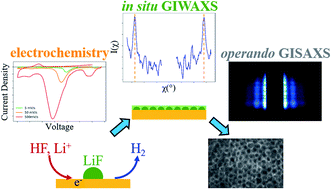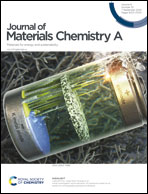Understanding additive controlled lithium morphology in lithium metal batteries†
Abstract
Directing the morphology of lithium metal deposits during electrodeposition is crucial to the development of safe, high energy density batteries with long cycle life. Towards this end, mechanistic insight is imperative to understand the impact of electrolyte components and cycling conditions on lithium morphologies. In this work, we used a standard carbonate-based electrolyte while systematically adding water (0–250 ppm, corresponding to 0–500 ppm HF) in Li‖Cu cells to study the links between electrolyte composition, initial solid electrolyte interphase (SEI) formation, and morphology of electroplated lithium metal using electrochemical characterization, X-ray scattering, X-ray photoelectron spectroscopy, and electron microscopy. Under conditions in which the electrolyte contains several hundred ppm added HF and applied constant currents on the order of 0.5 mA cm−2, this system yields electrodeposited lithium metal with a highly monodispersed columnar morphology. Systematic experimental investigation of the HF reduction process, nature of the initial SEI, and the structure of the electrodeposited lithium metal enable insights to be drawn concerning the underlying mechanisms of columnar lithium formation. This morphology arises from an SEI layer comprising crystalline LiF deposits on the copper current collector surface, formed through selective reduction of HF at high potential, embedded in an amorphous matrix of solvent reduction products. This interphase structure contains fast lithium-ion diffusion pathways which lead to a high nucleation density and uniform growth of lithium metal deposits. The mechanism proposed herein will help to inform future electrolyte additive design and formation cycling protocols for lithium metal batteries.

- This article is part of the themed collection: Journal of Materials Chemistry A HOT Papers


 Please wait while we load your content...
Please wait while we load your content...
